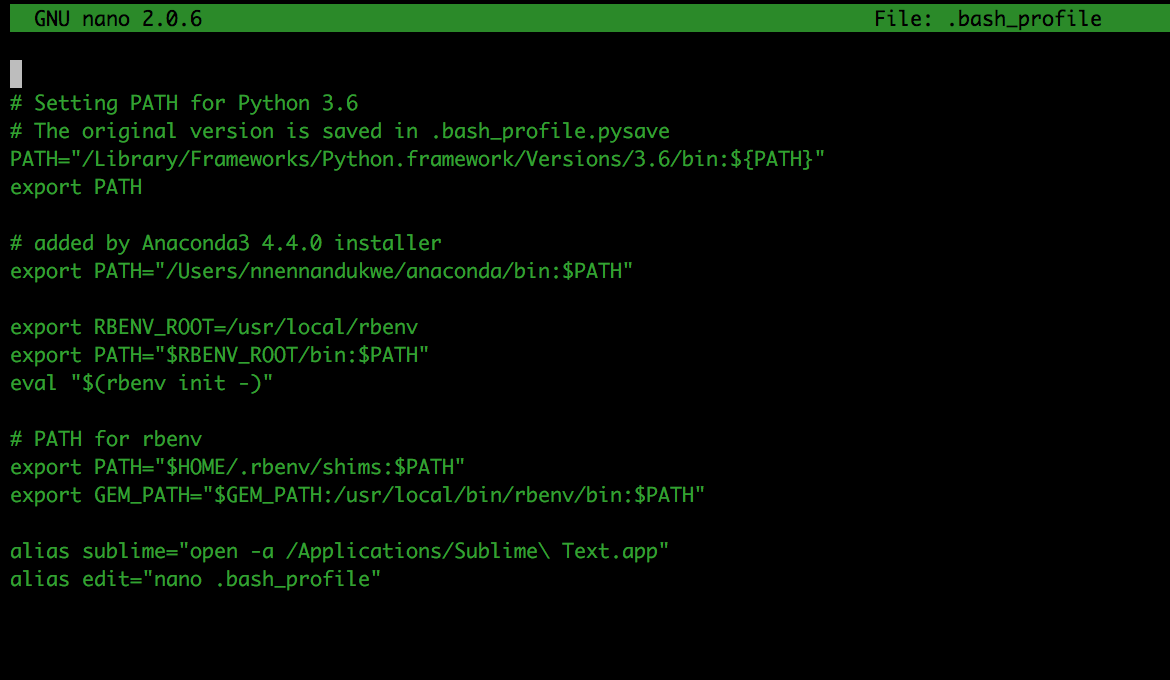

- HOW DO YOU RENAME A FILE IN BASH ON MAC HOW TO
- HOW DO YOU RENAME A FILE IN BASH ON MAC INSTALL
- HOW DO YOU RENAME A FILE IN BASH ON MAC MAC
Replace text: Enter the text you want to remove in the Find field, then enter the text you want to add in the “Replace with” field.Īdd text: Enter the text you want to add in the field, then choose to add the text before or after the current name.įormat: Choose a name format for the files, then choose to put the index, counter, or date before or after the name. In the pop-up menu below Rename Finder Items, choose to replace text in the names, add text to the names, or change the name format. On your Mac, select the items, then Control-click one of them.
Connect a wireless keyboard, mouse, or trackpad. Get started with accessibility features. Use Sign in with Apple for apps and websites. Manage cookies and other website data in Safari. View Apple subscriptions for your family. Subscribe to podcast shows and channels. Sync music, books, and more between devices. Send files between devices with AirDrop. HOW DO YOU RENAME A FILE IN BASH ON MAC MAC
Make and receive phone calls on your Mac. Insert photos and documents from iPhone or iPad. Use a keyboard and mouse or trackpad across devices. Use Continuity to work across Apple devices. Use SharePlay to watch and listen together.  Use Live Text to interact with text in a photo. Make it easier to see what’s on the screen. Change the picture for you or others in apps.
Use Live Text to interact with text in a photo. Make it easier to see what’s on the screen. Change the picture for you or others in apps. HOW DO YOU RENAME A FILE IN BASH ON MAC INSTALL
Install and reinstall apps from the App Store. Returning to our last example, to change the file extension from. -v: Shows a verbose version of the output. -s: Renames the target instead of the symlink. Best combined with the verbose output ( -v). -n: Performs a dry run, making no permanent changes.  -l: Replaces the last occurrence of the filename element instead of the first one. -i: Displays a prompt before overwriting existing files. -f: Forces an overwrite of existing files. -a: Replaces all the occurrences of the filename element instead of just the first one. The rename command uses the following options: In this example, every a character in the filename is replaced by an x, every b by a y, and every c by a z. This type of expression uses the following syntax: rename 'y///' Īn example of a rename command using a translate expression: rename 'y/abc/xyz/' : Defines the file you want to rename.Ī translate expression translates one string of characters into another, character for character. : Specifies a replacement for the part of the current filename. : Specifies the part of the filename you want to replace. : Provides an optional argument that changes the way the command executes.
-l: Replaces the last occurrence of the filename element instead of the first one. -i: Displays a prompt before overwriting existing files. -f: Forces an overwrite of existing files. -a: Replaces all the occurrences of the filename element instead of just the first one. The rename command uses the following options: In this example, every a character in the filename is replaced by an x, every b by a y, and every c by a z. This type of expression uses the following syntax: rename 'y///' Īn example of a rename command using a translate expression: rename 'y/abc/xyz/' : Defines the file you want to rename.Ī translate expression translates one string of characters into another, character for character. : Specifies a replacement for the part of the current filename. : Specifies the part of the filename you want to replace. : Provides an optional argument that changes the way the command executes. 
With this syntax, the command renames the file by replacing the first occurrence of the filename element with the replacement. They use the following syntax: rename 's///' Substitute expressions replace a part of the filename with a different string. The rename command uses substitute and translate expressions to change file and directory names. There are three types of Perl regular expressions: match, substitute and translate. For Arch Linux, use sudo pacman -S rename.For CentOS and Fedora, use sudo yum install prename.For Ubuntu and Debian, use sudo apt install rename.If your system is missing the rename command, install it with: On many Linux distributions, the rename command is not available by default. It offers more features than the mv command but can be more challenging to use since it requires basic knowledge of Perl expressions. The rename command is used to rename multiple files or directories in Linux.
HOW DO YOU RENAME A FILE IN BASH ON MAC HOW TO
Note: Learn how to compare two files using the diff command.








 0 kommentar(er)
0 kommentar(er)
